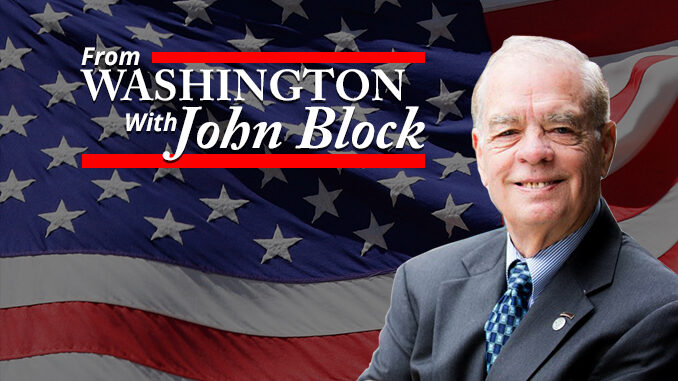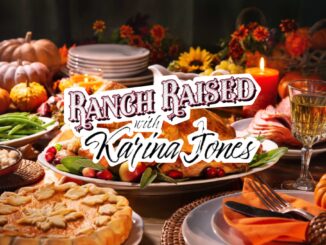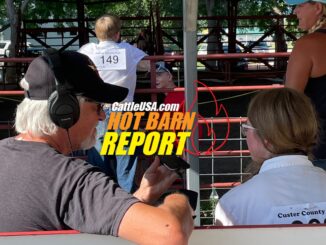

Hello everybody out there in farm country. This radio commentary is brought to you by the National Corn Growers Association, CropLife America, and Renewable Fuels Association. They are all friends, supporters, and allies of a healthy farm economy and prosperous rural America. Thank you.
And now for today’s commentary –
Field Director for R-CalfUSA Karina Jones in for former Secretary of Ag John Block on this week’s From Washington.
Twice a year those involved in all segments of the cattle industry keep their eye on the USDA reporting and their ear to the ground. January and June mark the arrival of the semi-annual cattle inventory report.
I have become increasingly interested in it because for me it continues to affirm how disconnected our cattle market is from the fundamentals. But I do think that with in that context it reveals other truths.
The January USDA cattle inventory report came up for air and has created some waves. Reuters reported, “The U.S. beef cow herd dropped to its lowest level since 1962, U.S. Department of Agriculture data showed last week. Declining supplies of cattle are expected to keep meat prices high for consumers.”
“We’re going to be dealing with some sharp beef-supply declines for the next three years straight and therefore higher beef prices,” said Rich Nelson, chief strategist for commodity broker Allendale, who warns, “There will be no help in the coming years for the consumer.”
So how bad is it? There were 28.9 million beef cows as of Jan. 1, down 3.6% from a year earlier, the USDA said. It was the smallest herd size for that date in 61 years, according to U.S. government data.
Cattle producers are not expected make “meaningful progress” in rebuilding the U.S. herd until 2025 at the earliest, Rabobank said. Meanwhile, restaurants, retailers and importers will increasingly compete for limited supplies of U.S. beef, the firm added.”
2 observations come to mind after reading that news. #1. How will said restaurants and retailers even know if they are buying U.S. beef? Great argument to get S. 52 The American Beef Labeling Act passed. Secondly, you would think with these tightening cattle supplies we would be seeing more aggressive trading in the live fat cattle market, but that doesn’t seem to be the case at all. We know that carcass weights are tumbling, so cattle must be current but we don’t seem to be seeing packer panic buying. Maybe because they continue to vertically integrate the supply chain or maybe because they can still fill their freezers with imported beef to pass on to completely unsuspecting consumers. So, I guess that would be reason #2 to pass S. 52!
Newton’s Third Law of Motion states, “For every action, there is an equal and opposite reaction.” As the domestic cattle industry continues to contract, we have got to get the beef from somewhere. I have a feeling our global beef industry corporations are salivating at the margins they will capture from importing beef from outside markets. This leaves analysts and the common cattle producers agreeing on one thing. No matter how much moisture we get, until this industry starts penciling in the black, the idea of rebuilding this nation’s cowherd seems will be a romantic notion, not a reality.
Until next week, this is John Block reporting from Washington, D.C. If you would like to review my radio shows going back more than 20 years, just go on-line to www.johnblockreports.com.







